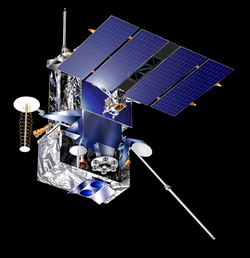|
Tag Archives: space
Astronaut tweets nighttime image of Colorado Front Range
Only a select few have the privilege of viewing our planet from space so those of us more grounded live vicariously through the images they send back. Astronaut Shane Kimbrough gave us a look at a lit up Front Range from Colorado Springs to Cheyenne in an image he tweeted out.
All the major population centers are clearly visible. The nighttime lights of Colorado Springs, Denver, Boulder, Fort Collins, Cheyenne and even Fort Morgan out on the plains are all visible. The Denver / Boulder office of the National Weather Service tweeted out a copy of the image labeled with the cities to provide some context.
Good morning USA! Cheyenne Wyoming and north central Colorado – Fort Collins, Greeley, Boulder, Denver, Colorado Springs. #CitiesFromSpace pic.twitter.com/4Z3lS0Wa6Z
— Shane Kimbrough (@astro_kimbrough) February 9, 2017
Amazing view of the Urban Corridor from Astronaut Shane Kimbrough as the International Space Station passed overhead! City names overlayed. pic.twitter.com/Fdb2Qh5uqm
— NWS Boulder (@NWSBoulder) February 10, 2017
John Glenn, First US Astronaut to Orbit the Earth, Dies at 95
|
Next generation weather satellite to be built in Denver

The National Oceanic and Atmospheric Administration (NOAA) has selected Lockheed Martin Space Systems Company of Denver to build their next generation of weather and environment monitoring satellites. When the GOES-R satellites are launched in 2015, they will provide unprecedented capability to NOAA, the National Weather Service and all weather forecasters through the use of advanced technology.
These extraordinary satellites will provide everything from lightning mapping and improved hurricane forecasting to monitoring of sea surface temperatures. The press release from NOAA provides some of the details on this exciting endeavor:
NOAA, NASA Select Contractor to Build GOES-R Series Spacecraft
New Geostationary Satellites Will Give Forecasters Better Information
December 2, 2008
NOAA and NASA officials announced today Lockheed Martin Space Systems Company, of Denver, Colo., has been selected to build two spacecraft for NOAA’s next generation geostationary satellite series, GOES-R. There are two options, each providing for one additional satellite. Scheduled for launch in 2015, the new satellites will provide more data in greater detail which is essential to creating accurate weather forecasts.
The contract has a total value of $1.09 billion for the two satellites. A separate contract to build the GOES-R ground system, which receives, processes and distributes data transmitted from the spacecraft, will be announced later in 2009, officials said.
“GOES-R, with its highly advanced instruments and sensors, will provide about 50 times more weather and climate data than is available with NOAA’s current fleet of geostationary satellites,” said Mary Kicza, assistant administrator for NOAA Satellite and Information Service. “The American public will see real life-saving benefits from this satellite system with more timely forecasts and warnings for severe weather.”
GOES-R will improve the monitoring of sea surface temperatures and also provide more data to hurricane forecasters by giving sharper images of storms every 30 seconds, instead of every 7.5 minutes as the current satellites provide.
Additionally, GOES-R will carry a first-of-its-kind instrument called the Geostationary Lightning Mapper, which will quickly locate all lightning flashes occurring anytime, anywhere in the Western Hemisphere. The lightning mapper will aid in predicting tornadoes, which often spawn from lightning-packed thunderstorms.
Other key benefits expected from GOES-R include: greater monitoring of surface temperatures in metropolitan areas to improve warnings for heat stress, and better data to bolster the forecasts for unhealthy air quality days. GOES-R will feature advanced solar monitoring instruments for space weather forecasts and warnings of solar storms. These storms endanger billions of dollars worth of commercial and government assets in space and cause power surges for the satellite-based electronics and communications industry.
George Morrow, director of Flight Project for NASA’s Goddard Space Flight Center in Greenbelt, Md. said, “NASA Goddard is excited to be NOAA’s partner in this next generation GOES development and we look forward to delivering an outstanding observatory for their operational use.”
NOAA funds, manages and will operate the GOES-R program. NASA’s Goddard Space Flight Center oversees the acquisition of the GOES-R spacecraft and instruments for NOAA.
For more information: NOAA / NASA GOES-R website
